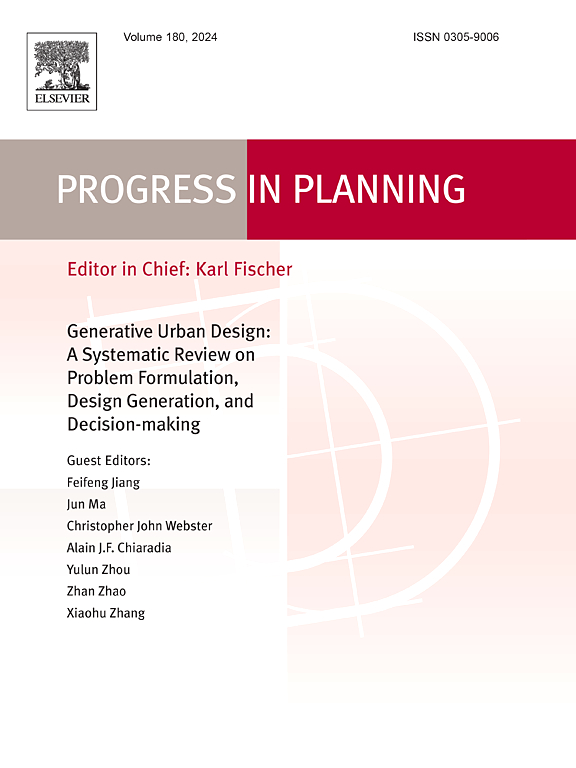How is urban agriculture practiced, institutionalized, implemented, and sustained? A literature review
IF 5.7
1区 经济学
Q1 ENVIRONMENTAL STUDIES
引用次数: 0
Abstract
Urban agriculture (UA) has emerged as a crucial strategy for ensuring sustainable food access in both developing and developed nations. However, the interplay between planning regulations and land availability significantly influences farmed land's scope and location, directly impacting UA activities' scale and intensity. The spatial mechanisms governing land use for UA stem from planning regulations, which may or may not align with food policies shaped by municipal actors—whose objectives often differ from those of civil actors. This review analyzes current urban agriculture practices in cities to explore how UA is practiced, institutionalized, implemented, and sustained, considering the influence of governance mechanisms and focusing on land-based forms of UA. By reviewing 51 peer-reviewed articles, consistent challenges impeding UA across various contexts were identified. Key factors include discord between civil and municipal actors, contextual elements affecting the enactment of supportive UA policies, and urban densification encroaching upon UA land. While these issues vary between developed and developing cities, they are primary drivers of informal or constrained UA practices and tenure insecurity. The review concludes that policies aimed at regulating UA to enhance food security should prioritize scaling up farming practices by ensuring access to larger plots with more secure tenure durations. Additionally, it emphasizes the need for flexible land-use and zoning ordinances that accommodate dual land uses, the establishment of UA protection zones to counter urban densification, and the active participation of civil actors in the process.
都市农业是如何实践、制度化、实施和持续的?文献综述
城市农业(UA)已成为发展中国家和发达国家确保可持续粮食获取的关键战略。然而,规划法规和土地可利用性之间的相互作用显著影响耕地的范围和位置,直接影响UA活动的规模和强度。管理UA土地使用的空间机制源于规划法规,这些法规可能与市政行为者制定的粮食政策一致,也可能不一致,而市政行为者的目标往往与民事行为者的目标不同。本文分析了当前城市农业的实践,探讨了城市农业的实践、制度化、实施和持续,考虑了治理机制的影响,重点关注了以土地为基础的城市农业。通过审查51篇同行评议的文章,确定了在不同背景下阻碍UA的一致挑战。关键因素包括民事和市政行为者之间的不和谐,影响支持性UA政策制定的背景因素,以及城市密度对UA土地的侵占。虽然这些问题在发达城市和发展中城市之间有所不同,但它们是非正式或受限的UA实践和使用权不安全的主要驱动因素。该评估的结论是,旨在规范农用农业以加强粮食安全的政策应该优先考虑通过确保获得更大的土地和更安全的租期来扩大农业实践。此外,它还强调需要制定灵活的土地使用和分区条例,以适应双重土地用途,建立统一的保护区以防止城市人口密集,以及民间行动者积极参与这一进程。
本文章由计算机程序翻译,如有差异,请以英文原文为准。
求助全文
约1分钟内获得全文
求助全文
来源期刊

Progress in Planning
Multiple-
CiteScore
10.70
自引率
1.60%
发文量
26
审稿时长
34 days
期刊介绍:
Progress in Planning is a multidisciplinary journal of research monographs offering a convenient and rapid outlet for extended papers in the field of spatial and environmental planning. Each issue comprises a single monograph of between 25,000 and 35,000 words. The journal is fully peer reviewed, has a global readership, and has been in publication since 1972.
 求助内容:
求助内容: 应助结果提醒方式:
应助结果提醒方式:


